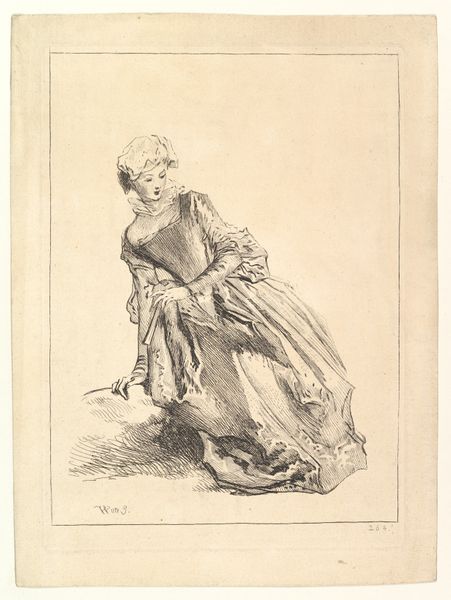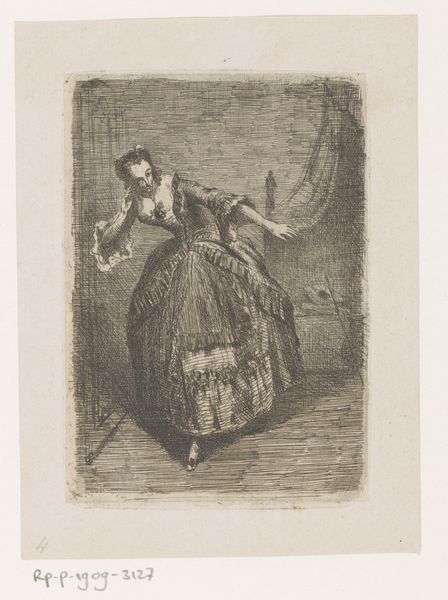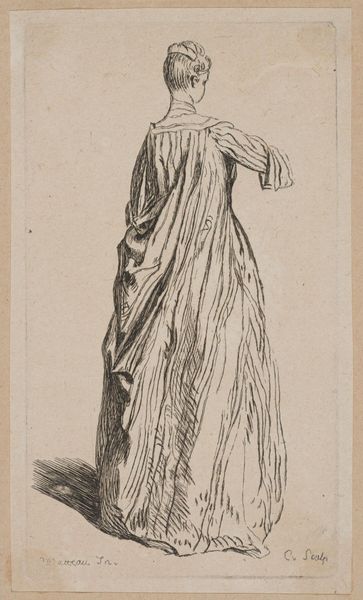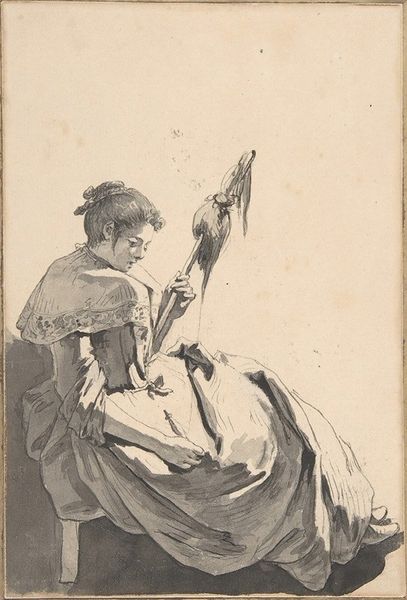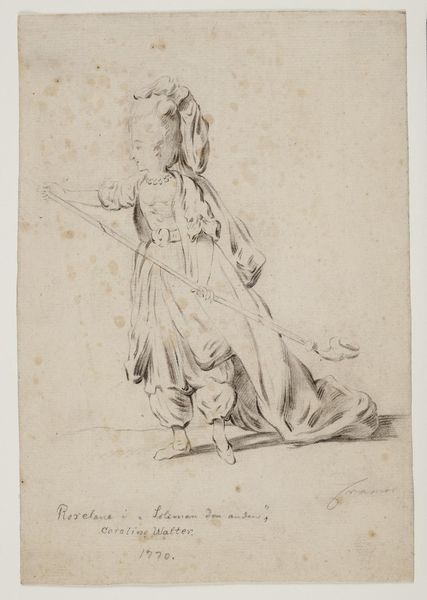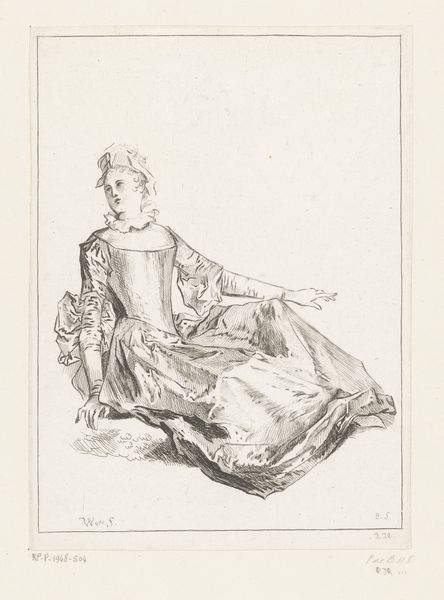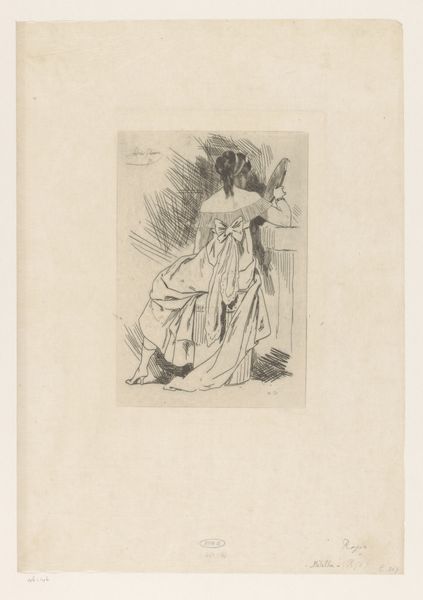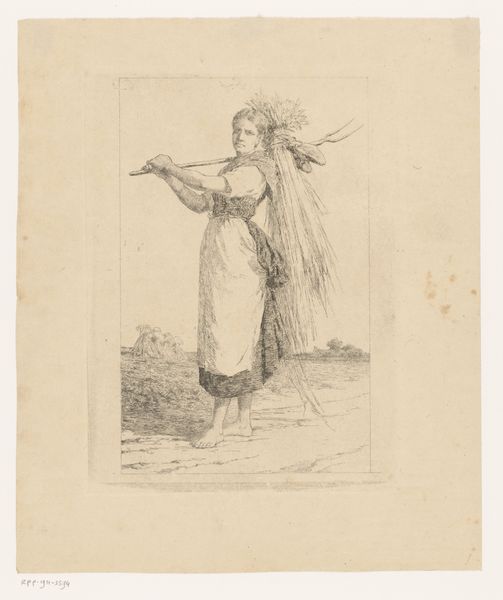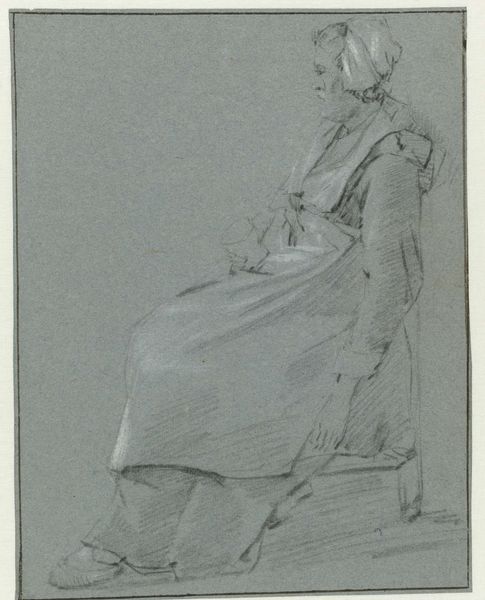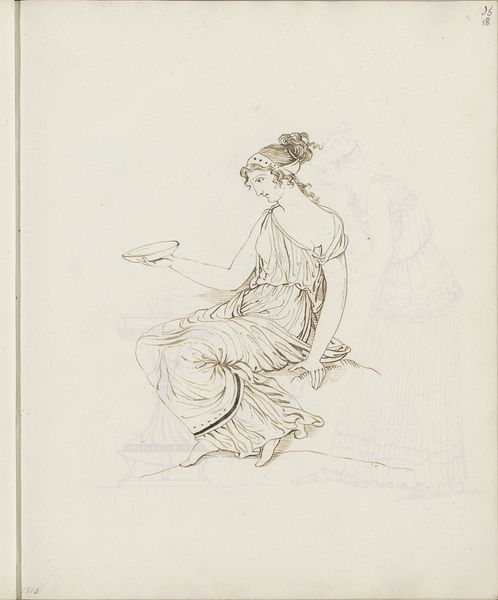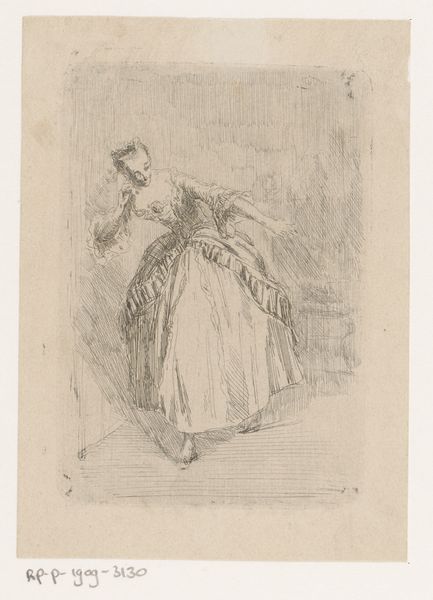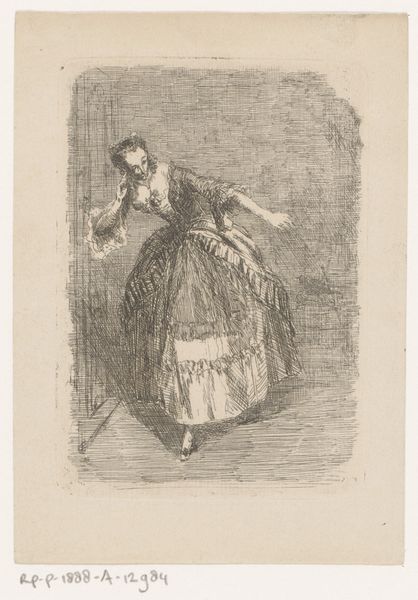
Dimensions: 237 × 158 mm (image/plate); 355 × 251 mm (sheet)
Copyright: Public Domain
Curator: We are looking at "Gerda Hagborg II," an etching done in 1893 by Anders Zorn. It's a lovely example of impressionistic portraiture on paper. Editor: The first thing that strikes me is the lightness of it all. There’s almost a playful quality, as if we’ve just caught her in a moment of reverie with her pet. Curator: Exactly. Zorn uses these quick, expressive lines that capture not just her likeness, but a fleeting moment, almost as if she will turn to look directly at us any moment. See how the lines define the volume of her dress and then dissipate into suggestive shading? Editor: Yes, there's an amazing economy of line at work here. The dress itself seems to flow and breathe, though one may observe that in creating this motion, the lower section of her skirt begins to dissolve into chaos, almost as though Zorn has only allowed himself a few quick scribbles to resolve the forms into an image. Also the pet seems almost entirely suggested, rather than depicted as solid animal form. The eye goes almost immediately to Gerda’s bowed head. The composition emphasizes her posture through line. Curator: He was a master of suggestion. I'm fascinated by the contrast between the meticulous details on her upper body with the implied form and shape created at the bottom of the image. I find my eyes travel from the sharp delineation of her collar down the swirling, energetic lines to this amorphous pet, and then circling back around, again and again, a dynamic of solidity dissolving into pure atmosphere. What I wonder is why? Editor: Perhaps it is Zorn’s technique more than deliberate effect? I find it is an artwork of binaries - in form it oscillates between quick sketch and measured drawing. Also we note the contrasting textures—the rough energy defining her dress, versus the more refined treatment of her face and hair. There seems, too, to be a spatial compression. The figure sits within an ill-defined architecture so that she both emerges from, yet melds into the pictorial plane of paper itself. Curator: That's an interesting point! It is hard to establish whether we are looking at background or atmosphere; whether solid shape or loose outline. I hadn’t quite thought of it that way. I really feel drawn to it precisely because it evokes such ambivalence; like an image half-remembered. Editor: Precisely. A very fruitful and satisfying discussion I feel.
Comments
No comments
Be the first to comment and join the conversation on the ultimate creative platform.

